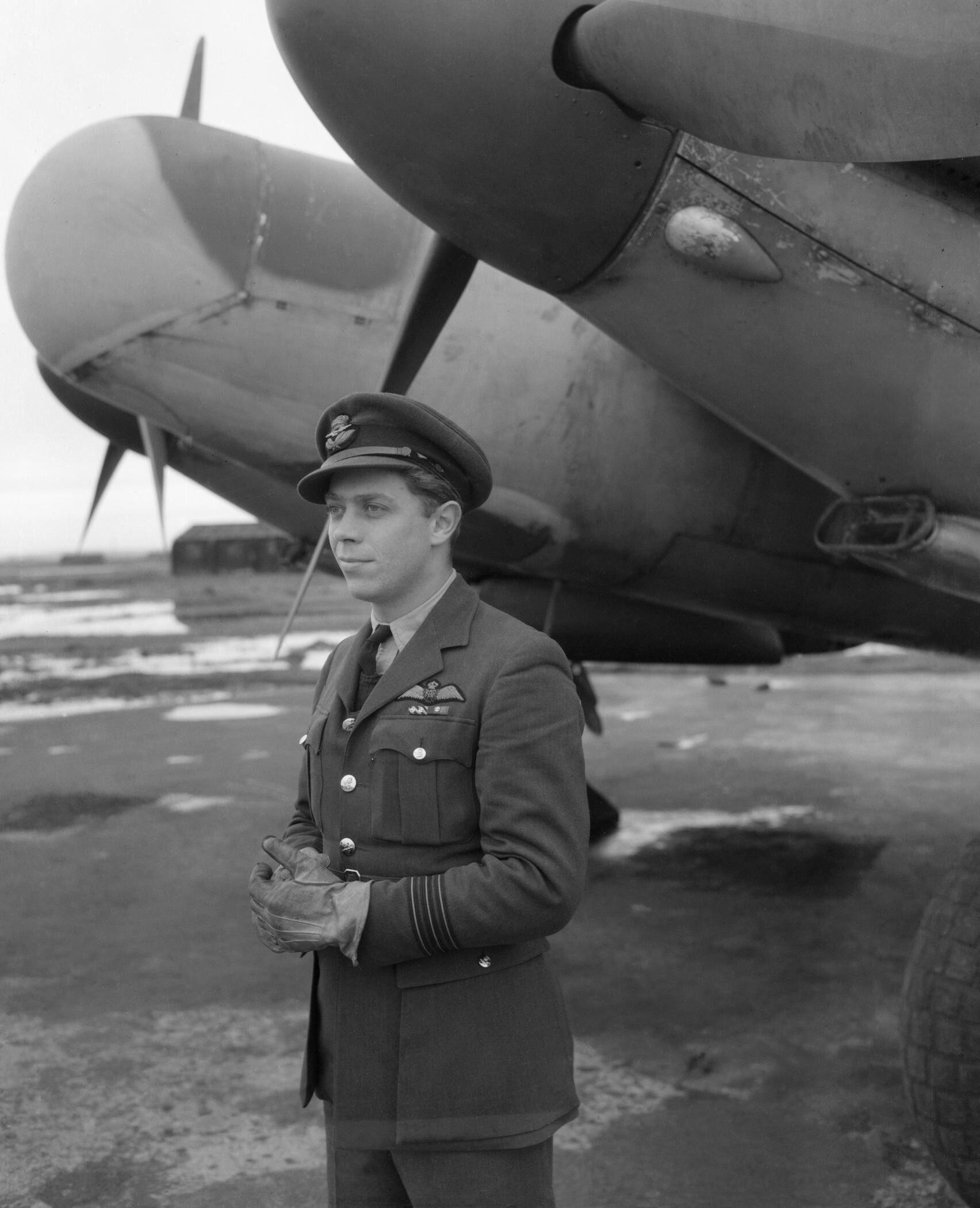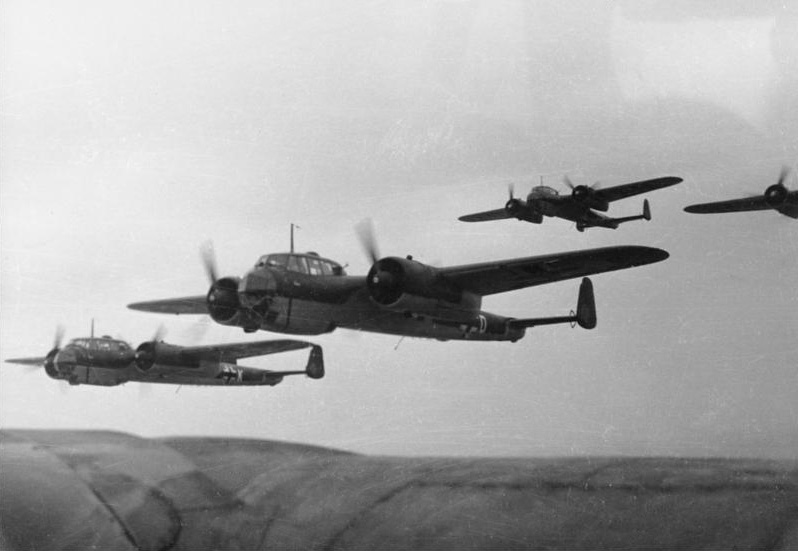
RAF Pilot Frederick Hughes flew the aircraft that shot down the German Dornier Do 17 near Kent, England. [IWM]
The formation was detected and Royal Air Force squadrons scrambled to intercept them above the Kent coast. In one British Defiant was Pilot Officer Frederick Desmond (Hawkeye) Hughes, the third-highest scoring RAF night fighter, and his gunner, Fred Gash.
“The specks grew into the long pencil-slim silhouettes of Dornier Do 17s, and suddenly, there were the black crosses, insolently challenging us in our own backyard!” wrote Hughes, who later rose to air vice-marshal.
The squadron attacked the Dorniers from below. “Fred Gash took as his target the second Dornier…his De Wilde incendiaries twinkled all over it, but particularly on its engine.” Two crew parachuted before the aircraft crashed.
The British crew’s second kill of the day was another Dornier Do 17 that was separated from its fighter cover. Gash took aim. Gunfire hit both engines and peppered the cockpit.

A formation of Dornier Do 17Zs, circa 1940. [Wikimedia]
The Dornier sank into the seabed and lay undisturbed for six decades, until snagged by a fishing net. In 2008, a diver investigated and when he found an aircraft instead of a shipwreck, reported it to archeologists. The crash site was surveyed and the hulk of the twin-engine aircraft was detected 15 metres underwater. Because it was not a war grave, permission was given to recover the wreck.
In 2013, the hulk was carefully raised. Although more than 1,500 Dorniers—known as the Flying Pencil—were built, this is the most substantial example known to exist today.
The aircraft was taken to the Michael Beetham Conservation Centre in Cosford, where the long conservation process began. Bits of the aircraft have been put on display in the RAF Museum at Cosford as conservators process them, but there are no plans to restore it to its original condition.
A virtual-reality display in the museum allows people to see a digital Dornier in flight as it would have been in 1940.
“The discovery and recovery of the Dornier is of national and international importance,” said Peter Dye, director general of the RAF Museum. “The aircraft is a unique and unprecedented survivor from the Battle of Britain and the Blitz.”
Advertisement






















